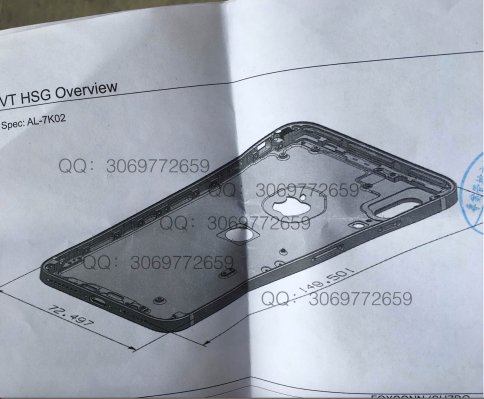Reliable iPhone leaker Sonny Dickson just shared new design schematics for the upcoming iPhone. The most interesting thing is that the leak clearly shows a spot on the rear of the device for the Touch ID sensor.
Rumor has it that Apple is going to release three new devices in September — upgraded versions of the iPhone 7 with better specs, and a brand new phone with a new form factor. This leak shows this top-of-the-line phone.
It features two cameras on the back. This time, they could be oriented vertically instead of horizontally. This isn’t really groundbreaking.
Aesthetically, Apple is moving back to an industrial design with sharp angles. It looks like the case of the device could be a single piece of aluminum, more like the iPhone SE.
It’s hard to see the antenna lines on these schematics. But Apple isn’t relying on glass panels (unlike on the iPhone SE). At the bottom of the device, you can clearly see the Lightning port and no headphone jack.
More interestingly, the dimensions of the device show that this iPhone could be half a centimeter wider and a centimeter taller when you compare it to the iPhone 7. Except for the top part of device with the selfie camera and speaker grill, Apple wants to replace the front of the device with a giant screen. The display will be taller but more or less as wide as the one on the iPhone 7. I believe taller screens are the future of smartphones.
That’s why Apple had to do something about the Touch ID sensor. The company wants to embed the Touch ID sensor into the screen. But this may not be ready for prime time just yet. Just like most Android phones out there, Apple could move its finger print sensor to the rear of the device.
This isn’t as elegant as having everything on the front side if you want to use your phone while it’s in a dock or on a table. Based on my experience with recent Android phones, you get used to it very quickly. So it could be an acceptable compromise. As always, Apple could still be experimenting with multiple design options.
